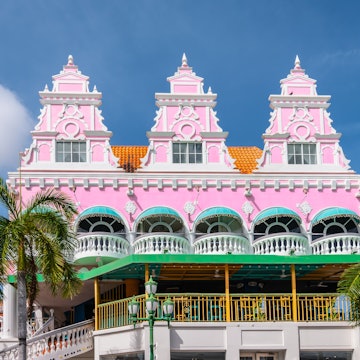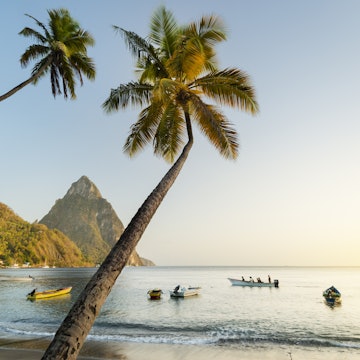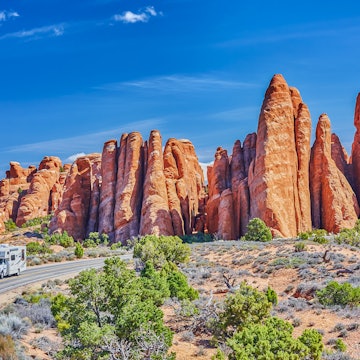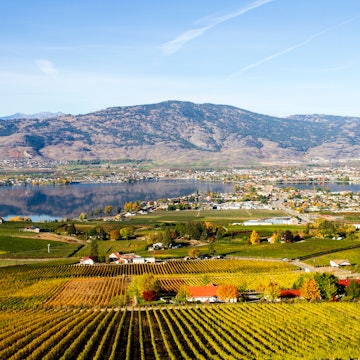

People mainly decamp to the San Juan Islands for peace, calm and communing with nature © Adam Hester / Getty Images
If you're in search of a peaceful retreat from the hectic pace of modern life, start planning your trip to the San Juan Islands now. This small, scattered archipelago is a bucolic mélange of sustainable farms and attractive B&Bs, where the pace hasn't changed much since the 1950s.
Peace, calm and communing with nature are the main reasons people come here. In laid-back but quietly industrious rural communities, motorists offer salutatory waves, and you can leave your bike unlocked outside the grocery store and still expect it to be there when you get back.
Don't arrive in search of shopping malls or a frenetic nightlife; come instead for kayaking, whale watching, beachcombing, sailing, clamming and skillfully concocted farm-to-table cuisine paired with local wines. Get ready to feel a world away while still vacationing in continental America.
When is the best time to go to the San Juan Islands?
Cocooned in the Puget Sound between northwest Washington and Canada's Vancouver Island, the San Juans have a relatively mild climate year-round. The best time to visit for dry, sunny and warm weather is between May and September. This is when most businesses are open and conditions are perfect for bracing outdoor activities like kayaking and cycling. However, it's also when the islands are most crowded.
To avoid the crush but still enjoy fine weather, come in September after Labor Day weekend.
The rainiest seasons are fall and winter, although heavy snow and subzero temperatures are rare. Accommodation rates are cheaper in the off-season, save for a short spike at Christmas and New Year.
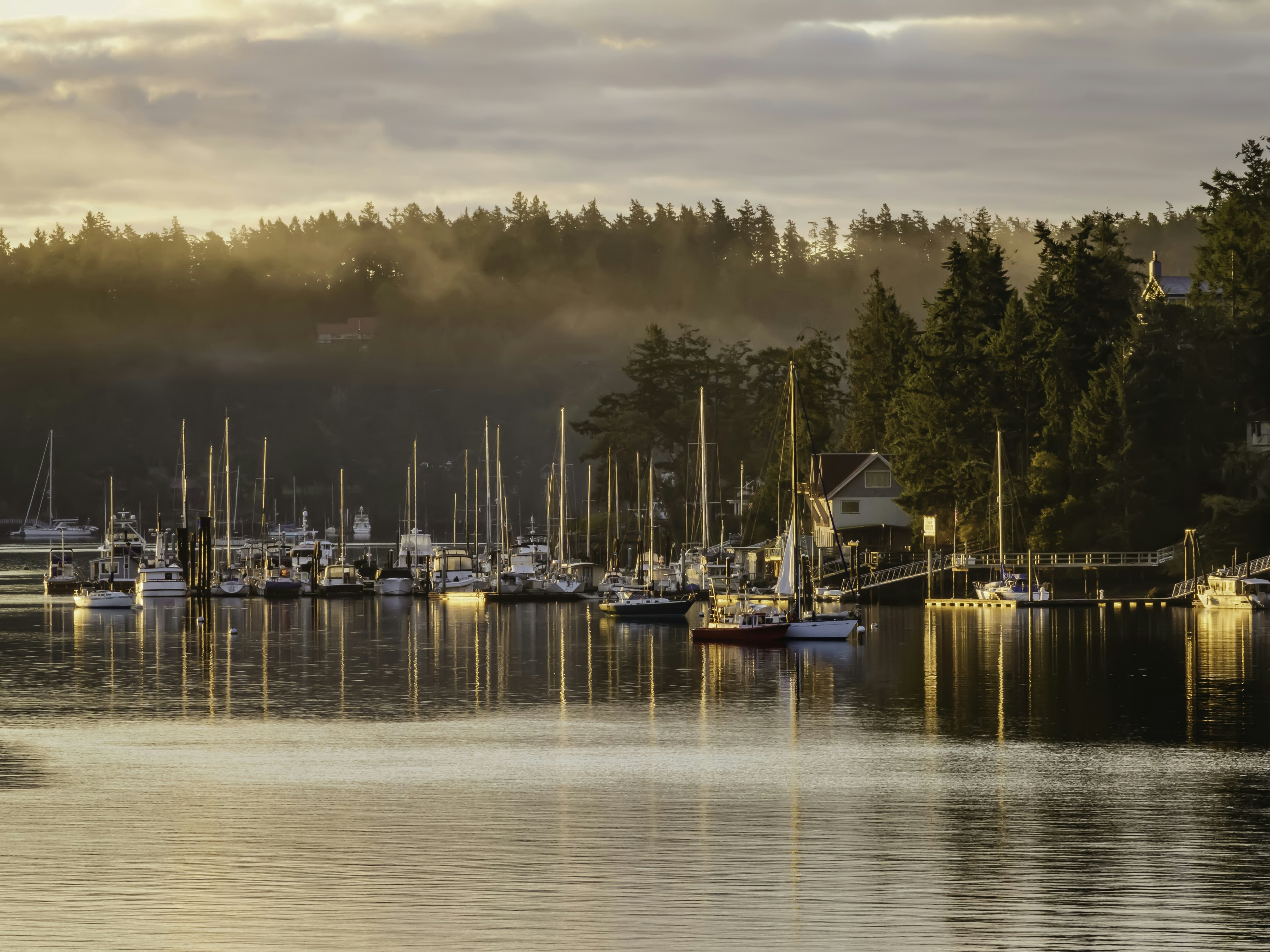
Is it easy to get to and around the San Juan Islands?
In terms of getting to the islands, you have two options: air or boat. The ferry is by far the most popular method, and the journey from the port of Anacortes – a 90-minute drive north of Seattle – is beautiful. There are more than 170 islands in the archipelago, and regular car ferries serve the largest four: Lopez, Shaw, Orcas and San Juan Island.
The three main islands – Lopez, San Juan, and Orcas – are small enough to cycle around, and each has a bike rental outlet. San Juan Island and Orcas run seasonal shuttle buses between May and September, linking the ferry terminals with the main sights. For convenience, many people bring their own cars.
There are regular flights in small aircraft and seaplanes between the San Juan Islands and Seattle, Anacortes and Bellingham. The nearest big international airport is Seattle-Tacoma International Airport (SeaTac).
How to pick the best San Juan island for you
San Juan Island: best for history
Welcome to the site of one of America's most improbable and little-known diplomatic spats.
The San Juan Islands' 15 minutes of fame came in 1859 during the so-called Pig War, a border dispute between the British and the Americans that almost triggered an all-out conflict. The incident, in which the only casualty was a foraging pig shot by an overzealous American farmer, led to the building of two military redoubts on San Juan Island to guard the then-ambiguous border between the US and Canada.
Today, British Camp and American Camp still stand on opposite sides of the island, incorporated into an atmospheric national historical park as a testament to a war that – fortunately – never happened. Old barracks, interpretative panels and park rangers help explain the fascinating history.
San Juan Island is also known for its wineries, cideries and artisan farms raising everything from lavender to alpacas.
Lopez Island: best for cycling
With its flat terrain, traffic-calmed country roads and friendly motorists, Lopez is an idyllic place to head out on two wheels. Leave the car at home (or at least park it at the ferry terminal in Anacortes) and pretend you're in the Netherlands.
Covering 30 sq miles and supporting a population of less than 3000, Lopez's landscapes are punctuated with sunburnt fields, handsome wooden barns, curvaceous beaches and rustling tracts of forest. With no highways or traffic lights to worry about, it's a cyclist's dream. Indeed, it's rare to see a car traveling more than 45mph.
Lopez Bicycle Works in "the village" rents a full gamut of two-wheeled machines between May and September. This is also the best place to organize fishing charters and kayaking trips. The island is renowned for its pebbly sand beaches, where playful seals linger.

Orcas Island: best for kayaking
The most rugged of the three "big" San Juans, Orcas' jagged coastline, with its bluffs, bays and scattered islets, is rich pickings for kayakers. Stick close to the shore, and you'll be paddling through clear, sheltered waters kissed by mossy tracts of temperate rainforest. Look out for seals, eagles and perhaps an orca or two on the horizon.
If kayaking away from the coast is a worry, join an organized trip. Shearwater Adventures on Orcas is considered one of the best kayaking schools in the state and offers tours and lessons.
Orcas has a large state park with a recreational lake, several campgrounds and 38 miles of trails. Nearby is the archipelago's most illustrious hotel, the vintage 1906 Rosario Resort & Spa, complete with its own museum.
How much money do I need for the San Juan Islands?
Despite its reputation as a haven for rich yachters, the islands' varied facilities can cater to most budgets.
Although you won't find any Walmarts or cheap shopping malls, you will encounter reasonably priced bakeries and delis with enough ingredients to put together a rustic picnic.
For travelers on a budget, there's a hostel in Friday Harbor on San Juan Island and camping possibilities on all four of the ferry-accessible islands. Several of the smaller paddle-in islands have primitive camping, too (reachable by private boat or kayak). All campgrounds have tent sites, while some larger places have full-utility sites for RVs.
While the more affluent crowd gets around by private boat, the hoi polloi utilizes Washington State Ferries – fares are refreshingly cheap, especially if you don't bring a car.
How many days do I need in the San Juan Islands?
A minimum of three days is recommended, longer if you want to spend quality time on all three of the main islands.
Are there any towns on the islands?
The only real town in the archipelago is San Juan Island's Friday Harbor, with a population of around 2000. Eastsound on Orcas and Lopez Village on Lopez are civic and commercial hubs that resemble small villages, equipped with shops, restaurants and accommodations.
Do bears live on the San Juan Islands?
There is no permanent bear population. Very occasionally, a lone black bear will swim over from Vancouver Island or the US mainland. They are usually caught and relocated.
Is Shaw Island worth a visit?
Shaw is the smallest of the four islands served by the public ferries. Accommodation-wise, it has an 11-berth campground; food-wise, there's just one general store. With a couple of beaches and a small network of quiet roads, it makes for a pleasant afternoon spin on a bicycle. Otherwise, stick to the larger islands.
Which is the biggest island?
Orcas, but only by a smidgeon – it measures 57 sq miles compared to San Juan Island's 55 sq miles. In terms of population, San Juan Island has more people, nearly 9000 to Orcas' 6000.
Which is the best island for hiking?
Orcas Island, courtesy of the 5000-acre Moran State Park, has an abundance of trails crisscrossing the archipelago's most rugged terrain, including 2407ft Mt Constitution.
What local dishes should I taste?
Shellfish is the archipelago's signature food, particularly locally caught razor clams, crab, oysters and scallops. Backing them up are two Pacific Northwest staples, halibut and salmon, both fished since pre-Columbian times. If seafood isn't your thing, don't worry – the islanders rear their own cows, pigs and sheep, with Lopez Island lamb heading the bill in local restaurants.

What are the best water activities?
Whale watching is hugely popular, and sightings of orca pods are almost guaranteed during the summer (May to October). There's even a good chance of spotting orca from the shoreline at San Juan Island's Lime Kiln Point State Park. Alternatively, whale-watching boat trips can be organized from Orcas and San Juan Island. Humpback, minke and gray whales also frequent local waters.
All three islands offer kayak rentals and tours. More experienced kayakers can progress along the Cascadia Marine Trail (CMT), a 160-mile sailing and paddling route of which the San Juans are an integral part. Many of the archipelago's more remote islands sport rustic CMT campsites equipped with landing areas, picnic tables and compost toilets, marked by official CMT signs.
Are there any non-athletic things to do?
San Juan Island has a whale museum, an art gallery, a museum and a winery with a tasting room. Orcas, Shaw and Lopez all have small historical museums, and The Rosario Resort on Orcas has a lovely spa.
My favorite thing to do in the San Juan Islands
The San Juans is the place I go for some "active relaxation," a place to switch off from world news and social media in favor of walking and running around quiet backroads and tree-rimmed coasts.
If I could bottle one experience, it would probably be the short, sharp 10-mile bike ride from the village of Eastsound to the top of Mt Constitution on Orcas Island. Taking in farmland, forest, shoreline, lakeside and mountainside on the way to the San Juans' highest point, I finish by climbing the observation tower on the summit, where island-speckled views stretch for miles over teal waters. If I had bionic vision, I would even be able to see my house – in Canada.
Daily costs
Basic room for two in peak season: $190
Campsites: tent/RV $15/45
Ferry ticket with/without car: $45.85/15.85
Bike/e-bike rental per day: $40/70
Coffee: $3.50–4.50
Sandwich: $8–13
Dinner for two: $80–100
Beer/pint at the bar: $6–8









